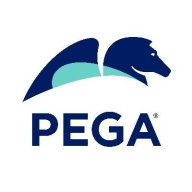

Pega Platform and SnapLogic are leading competitors in the digital transformation and data integration spaces, respectively. Pega holds the upper hand due to its comprehensive enterprise capabilities, while SnapLogic excels in ease of integration.
Features: Pega Platform offers automation, case management, and low-code development to enhance enterprise digital transformations. Its integration capabilities and ease of deployment in enterprise settings add to its value. User reviews point to its simple interface, although opinions vary regarding the complexity of its features for newer users. SnapLogic is renowned for its connectors and ease of use, making it ideal for big data integration. However, it may struggle with complex logic tasks.
Room for Improvement: Pega needs to address scalability and flexibility issues, particularly in version transitions. Complex UI and high costs could be downsides for smaller enterprises. Enhancements in AI, cloud capabilities, and customer support are required. SnapLogic could improve with more versatile connectors and better error reporting. Enhanced support and management tools would also benefit the platform.
Ease of Deployment and Customer Service: Pega offers flexible deployment across on-premises, cloud, and hybrid models, though its complexity demands significant technical support, resulting in mixed reviews. SnapLogic offers easier deployment for hybrid and cloud environments with satisfactory customer service, making integration setups straightforward for reduced complexity.
Pricing and ROI: Pega Platform is expensive, targeted at large enterprises needing a robust solution, with its complex tiered licensing. It offers good ROI through operational efficiency and productivity. SnapLogic, with typically lower pricing and flexible usage-based tiers, suits organizations seeking simple integrations with minimal coding. SnapLogic offers cost-effective agility, while Pega promises substantial returns in enterprise roles.
The technical support from Pega is very low, rating a one or two out of ten.
I never needed support from the platform standpoint, but if additional features are required, we have regular meetings with the product team for feedback.
Pega's technical support team is very helpful.
The technical support from SnapLogic is excellent, and I would give it a complete ten.
I rate the scalability of SnapLogic as eight out of ten.
I would rate the stability of SnapLogic as nearly ten out of ten.
Pega introduced Constellation, which allows a user to build a more engaging visual experience.
My learning curve in robotics has been challenging.
If the AI capabilities and integrations were more intuitive and easy to learn for new users, it would be greatly beneficial.
I tend to frequently communicate with SnapLogic to ask for additional features, and they have been responsive.
Pega is priced higher than open-source options like Flowable but is suitable for large-scale industries like banking and insurance.
The pricing is expensive, and this is an issue.
There would be only one point of improvement if the price could be lower.
SnapLogic is positioned at around seven or eight out of ten in terms of pricing.
Pega Platform is excellent for enterprise-level solutions with integrations to entire systems, including case management, service orchestration, CRM, decision-making capabilities, digital process automation, and AI-driven functionalities.
Management capabilities such as dashboards.
I also like the whole child-parent pipeline feature; it allows me to break up a process into smaller pieces and then have one big pipeline that controls these smaller pipelines.
I find SnapLogic to be user-friendly, especially for beginners with limited experience in data engineering or ETL.


Pega Platform facilitates business process management, case management, and workflow automation for industries like banking, insurance, and healthcare. It supports digital transformation and customer service enhancements with its low-code capabilities and seamless integrations.
Pega Platform enables users to create efficient systems for case management, financial operations, and digital transformations. It provides tools for client onboarding, quoting, claims processing, customer experience improvements, and content management. Pega's low-code approach allows for the automation of complex processes, making it suitable for enterprises looking for adaptability and rapid deployment. While it offers strong real-time analytics and decision automation, users acknowledge challenges in user interface, integration, and performance aspects. High costs and a learning curve need attention, and enhancements in AI features and cloud services are desired.
What are the key features of Pega Platform?In banking, Pega Platform automates loan processing, accelerates customer onboarding, and manages compliance. Insurance companies benefit from streamlined claims processing and policy management. Healthcare sectors use the platform for patient engagement and care coordination, enabling organizations to adapt quickly to changing industry requirements.
The SnapLogic Intelligent Integration Platform uses AI-powered workflows to automate all stages of IT integration projects – design, development, deployment, and maintenance – whether on-premises, in the cloud, or in hybrid environments. The platform’s easy-to-use, self-service interface enables both expert and citizen integrators to manage all application integration, data integration, API management, B2B integration, and data engineering projects on a single, scalable platform. With SnapLogic, organizations can connect all of their enterprise systems quickly and easily to automate business processes, accelerate analytics, and drive transformation.
We monitor all Process Automation reviews to prevent fraudulent reviews and keep review quality high. We do not post reviews by company employees or direct competitors. We validate each review for authenticity via cross-reference with LinkedIn, and personal follow-up with the reviewer when necessary.